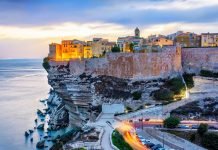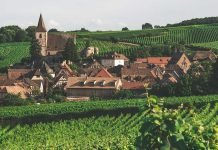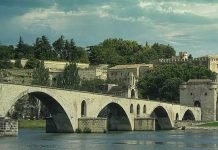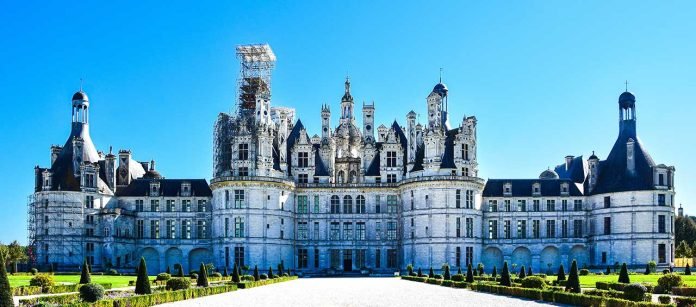Whether it’s the majestic Château de Chambord or the charming Château de Chenonceau, the Loire Valley offers a peek into a bygone era of grandeur and elegance. As we leave behind these architectural masterpieces, we carry with us a newfound appreciation for the history and culture that has shaped them. Embarking on this journey is akin to stepping into the pages of a living fairy-tale, one where stone and garden breathe life into stories of queens and kings, drama and beauty, war and peace. In the Loire Valley, every castle has a tale to tell. All you need to do is listen.
The Loire Valley, often referred to as the “Garden of France” and the “Cradle of the French Language”, stands as a beacon of France’s regal and architectural prowess. With its lush landscapes and multitude of castles (or “châteaux”), the Loire Valley is a fairy-tale come to life.
Today, we venture into this magnificent valley to immerse ourselves in three of its most emblematic destinations: the Château de Chambord, the the Château du Clos Lucé and the Château de Chenonceau whilst suggesting a four-day itinerary for those who would like to explore more thoroughly.
Château de Chenonceau: The Ladies’ Castle
Stepping into the Château de Chenonceau, one cannot help but feel the distinctly feminine touch that has earned it the moniker “Ladies’ Castle”. This magnificent château, with its storied female-dominated history, radiates charm, elegance, and a resilience that echoes the remarkable women who’ve shaped it.
The history of Chenonceau is intimately tied to the influential women who’ve resided there. From Katherine Briçonnet, who oversaw the château’s construction in the 16th century, to Diane de Poitiers and Catherine de’ Medici, who enhanced the château with gardens and grandeur, each has left an indelible mark. Louise Dupin brought enlightenment ideas, while Madame Pelouze ensured the restoration and preservation of Chenonceau in the 19th century.
Architecture and Gardens: Elegance Personified
Chenonceau’s architecture is remarkable, its iconic arched bridge graces the Cher River, and its grand gallery sets it apart from other châteaux. However, what truly enhances its beauty are the exquisite gardens cultivated by Diane de Poitiers and Catherine de’ Medici. These idyllic gardens, one in the English style and the other in the Italian style, are a sensory delight that reflects the aesthetic sense of their creators.
Château du Clos Lucé
The Château du Clos Lucé, located in the town of Amboise in the Loire Valley, was the former residence of Leonardo da Vinci during the last years of his life. Here’s more information about this fascinating museum:
The Château du Clos Lucé was built in the early 15th century and was acquired by King Charles VIII of France. In 1516, King Francis I invited Leonardo da Vinci to live in the château, where he spent the final three years of his life until his death in 1519. The château itself is a beautiful example of French architecture from the Renaissance period. It features a mix of Gothic and Renaissance styles, with elegant towers, stone facades, and picturesque gardens.
Within the château, visitors can explore the rooms where Leonardo da Vinci lived and worked. The rooms are furnished with period furniture, giving a glimpse into the living conditions of the time with one of the highlights of the Château du Clos Lucé being the exhibition of Leonardo da Vinci’s inventions. There are over 40 full-scale models of his ingenious machines, including flying machines, war machines, and various mechanical devices. It’s a unique opportunity to get a closer look at the brilliant mind of Leonardo da Vinci and his visionary ideas.
In addition to his inventions, the château also displays reproductions of Leonardo da Vinci’s famous artworks, such as the Mona Lisa and The Last Supper. There are also temporary exhibitions that delve into various aspects of Leonardo’s life and work.
The Château du Clos Lucé is surrounded by stunning gardens where visitors can take a leisurely stroll. These gardens are inspired by the Renaissance period and feature lush greenery, flowers, and even some of Leonardo’s inventions integrated into the landscape.
The museum offers an interactive experience for visitors, with multimedia presentations, audio guides, and informative displays that provide insights into Leonardo da Vinci’s life and work.
The Majestic Château de Chambord: A Renaissance Marvel
As you approach the Château de Chambord, the largest château in the Loire Valley, the sheer size and intricacy of its design command your attention. This Renaissance marvel, an architectural feat credited to King François I, is the epitome of the French Renaissance’s splendor.
Chambord is truly a visual treat, with its unique French Renaissance architecture that combines traditional French medieval forms with classical Renaissance structures. The château’s defining feature is its central double helix open staircase that ascends the château’s three floors without ever meeting, illuminated from above by a sort of lighthouse. The panoramic terraces offer breath-taking views of the château’s wild estate.
A Haven for Nature
The Château de Chambord is also a haven for nature enthusiasts. Enclosed by a 20-mile-long wall, Chambord’s estate is the largest enclosed forest park in Europe, teeming with a diverse array of flora and fauna. A leisurely stroll through this untouched wilderness is the perfect complement to the opulence of the château.
Four-day itinerary for visiting the Castles of the Loire Valley
Day 1:
- Morning: Start your day by visiting the beautiful Château de Chenonceau, known for its stunning architecture and picturesque location spanning the Cher River.
- Afternoon: Explore the nearby town of Amboise and visit the Château du Clos Lucé, the former residence of Leonardo da Vinci. Discover his inventions and artworks in this fascinating museum.
- Evening: Enjoy the charming atmosphere of Amboise and indulge in some local cuisine.
Day 2:
- Morning: Head to the Château d’Azay-le-Rideau, a masterpiece of Renaissance architecture set on an island in the Indre River.
- Afternoon: Visit the Château de Villandry, famous for its magnificent gardens. Take a leisurely stroll through the meticulously designed Renaissance gardens.
- Evening: Relax and unwind in the peaceful surroundings of Villandry.
Day 3:
- Morning: Explore the iconic Château de Chambord, the largest castle in the Loire Valley. Marvel at its grandeur and intricate details.
- Afternoon: Continue your castle tour with a visit to the Château de Cheverny, known for its well-preserved interiors and beautiful grounds.
- Evening: Enjoy a leisurely dinner in the charming town of Blois.
Day 4:
- Morning: Discover the Château de Chaumont-sur-Loire, known for its stunning views of the Loire River and its annual International Garden Festival.
- Afternoon: Conclude your castle tour with a visit to the Château d’Ussé, often associated with the fairy tale of Sleeping Beauty.
- Evening: Take some time to relax and reflect on your enchanting journey through the Loire Valley.
Please note that this itinerary is just a suggestion, and you can customize it based on your preferences and the time you have available. Enjoy your visit to the Castles of the Loire Valley!



















